When most people think of sharks, the menacing image of a great white shark with rows of razor-sharp teeth often comes to mind, fueled by movies like “Jaws” and sensationalized media coverage. However, the reality of shark diversity tells a much different story. Of the more than 500 shark species swimming in our oceans, many are small, non-aggressive, and even shy creatures that pose virtually no threat to humans. These fascinating fish have evolved remarkable adaptations and behaviors that make them some of the most interesting animals on the planet. From sharks that glow in the dark to those that can walk on land, this diverse group of cartilaginous fish deserves recognition for their ecological importance and unique characteristics rather than unwarranted fear. Let’s dive into the world of 18 fascinating sharks that might just change your perspective on these misunderstood ocean dwellers.
Whale Shark The Gentle Giant

Despite being the largest fish in the sea, reaching lengths of up to 40 feet, the whale shark (Rhincodon typus) is one of the ocean’s gentlest creatures. These magnificent giants feed almost exclusively on plankton and small fish, using their massive mouths like vacuum cleaners to filter their tiny prey from the water. With their distinctive pattern of white spots and stripes on a dark blue background, whale sharks are instantly recognizable and have become favorites among divers and snorkelers. Unlike their predatory cousins, they have tiny teeth (about the size of a match head) and show no interest in hunting larger prey. Conservation efforts are crucial for these endangered gentle giants, as their numbers have declined due to fishing pressure, vessel strikes, and habitat loss. Swimming alongside a whale shark in places like Mexico’s Yucatan Peninsula or the Philippines is considered one of the most awe-inspiring wildlife encounters a person can experience.
Bamboo Shark The Living Fossil

Bamboo sharks, belonging to the family Hemiscylliidae, are among the most docile shark species, making them popular in home aquariums. These bottom-dwellers typically grow to just 2-4 feet in length and have slender bodies with distinctive patterns that help them blend into coral reefs and sandy bottoms. What makes bamboo sharks particularly fascinating is their ability to survive in shallow, oxygen-depleted waters by using their muscular pectoral fins to “walk” along the ocean floor—a behavior that’s believed to have changed little over millions of years, earning them the nickname “living fossils.” Some species, like the epaulette bamboo shark, can even survive out of water for up to an hour by slowing their metabolic rate, allowing them to move between tide pools. Their diet consists mainly of small invertebrates and crustaceans, which they hunt by using their highly sensitive barbels to detect prey hiding in sand or crevices. These unassuming sharks pose absolutely no threat to humans and will typically flee rather than confront a potential threat.
Basking Shark The Peaceful Plankton Eater

The basking shark (Cetorhinus maximus) is the second-largest fish in the world, reaching lengths of up to 26 feet, yet it feeds exclusively on some of the ocean’s smallest organisms. These enormous sharks swim slowly near the surface with their cavernous mouths wide open, filtering plankton through their highly specialized gill rakers. A single basking shark can filter approximately 2,000 tons of water per hour, extracting zooplankton, small fish, and invertebrates. Despite their intimidating size, basking sharks are completely harmless to humans, lacking both the teeth and the temperament for aggression. Their name comes from their habit of “basking” in warm surface waters, often appearing to sunbathe. Unfortunately, these gentle giants have been heavily targeted for their large fins, liver oil, and meat, leading to population declines. Conservation efforts are now in place to protect these remarkable sharks, which are listed as endangered on the IUCN Red List. Basking sharks are seasonal visitors to coastal waters in regions including the UK, Ireland, New England, and parts of the Mediterranean, where they can occasionally be spotted from shore.
Thresher Shark The Tail-Whipping Hunter
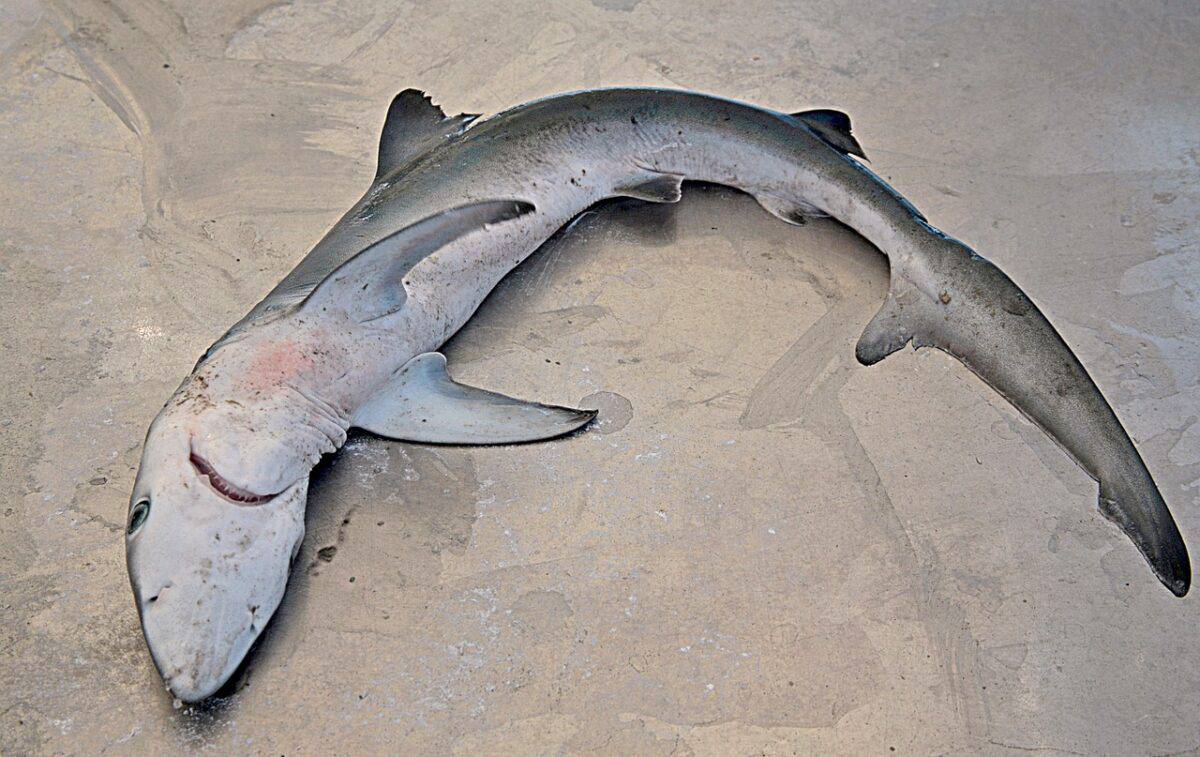
The thresher shark family (Alopiidae) includes three species distinguished by their extraordinarily long upper tail lobes, which can account for nearly half of their total body length. These sharks have evolved one of the most unusual hunting techniques in the ocean: they use their elongated tails like whips to stun and kill prey. When hunting schooling fish like mackerel or sardines, thresher sharks will swim in circles to bunch their prey together, then slash their tails overhead with such force that the tip can travel twice the speed of sound in water. The shockwave created stuns or kills multiple fish at once, allowing the shark to easily collect its meal. Despite this dramatic hunting style, thresher sharks are extremely shy around humans and typically flee when encountered. Growing to lengths of 10-20 feet (including the tail), these sharks have slender bodies, small mouths, and relatively small teeth designed for gripping rather than tearing. They’re primarily pelagic, meaning they spend most of their time in open ocean waters rather than near coasts, further reducing any chance of human interaction. Their unique appearance and behavior make them favorites among divers lucky enough to spot them.
Leopard Shark The Spotted Reef Dweller
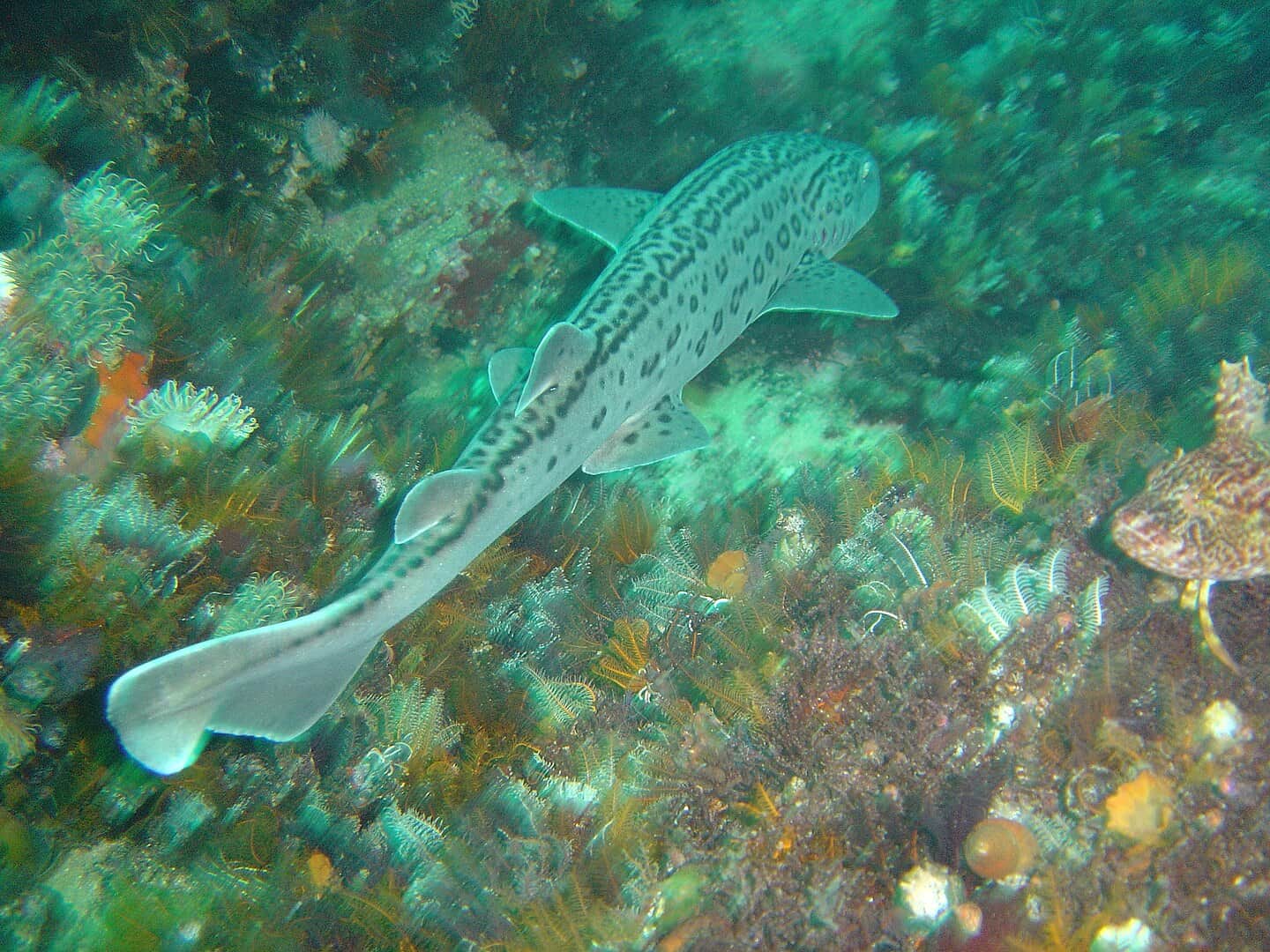
The leopard shark (Triakis semifasciata) is instantly recognizable by its striking pattern of black saddle-like markings and spots on a silvery-bronze background. Native to the Pacific coast of North America, these sleek sharks typically grow to about 4-5 feet in length and inhabit shallow coastal waters, bays, and estuaries. Leopard sharks are among the most docile shark species, posing virtually no threat to humans—there has never been a confirmed unprovoked attack by a leopard shark on a person. They’re bottom feeders that use their somewhat flattened heads to dig through sand and mud in search of crabs, clams, fish eggs, and small fish. During summer months, leopard sharks often gather in large groups in shallow waters, sometimes in water so shallow that their dorsal fins break the surface. These aggregations have become popular attractions for snorkelers in places like La Jolla Cove in California, where people can safely swim alongside dozens of these beautiful sharks. Leopard sharks are slow to mature and produce relatively few young, making them vulnerable to overfishing, but their populations are currently considered stable.
Wobbegong The Carpet Shark

Wobbegongs, often called carpet sharks due to their intricate, carpet-like patterns and flattened bodies, are masters of camouflage. These bottom-dwelling sharks, found primarily in shallow waters around Australia and the Indo-Pacific region, have evolved elaborate skin flaps around their mouths and textured skin patterns that perfectly mimic the coral reefs and seaweed-covered rocks where they live. There are about 12 species of wobbegongs, ranging from 3 to 10 feet in length. Unlike most sharks that must swim continuously to breathe, wobbegongs can pump water over their gills while remaining motionless on the seafloor for hours or even days. They’re ambush predators that wait patiently for unsuspecting fish or crustaceans to swim close to their seemingly innocuous mouths before lunging with surprising speed. While they generally pose no threat to humans, wobbegongs may bite if stepped on or handled, as their powerful jaws and needle-like teeth are designed to grip prey tightly. However, these bites are defensive rather than predatory, and wobbegongs would much rather remain hidden than engage with divers. Their extraordinary camouflage makes spotting them a rewarding challenge for underwater photographers and marine enthusiasts.
Cookie Cutter Shark The Deep-Sea Snacker
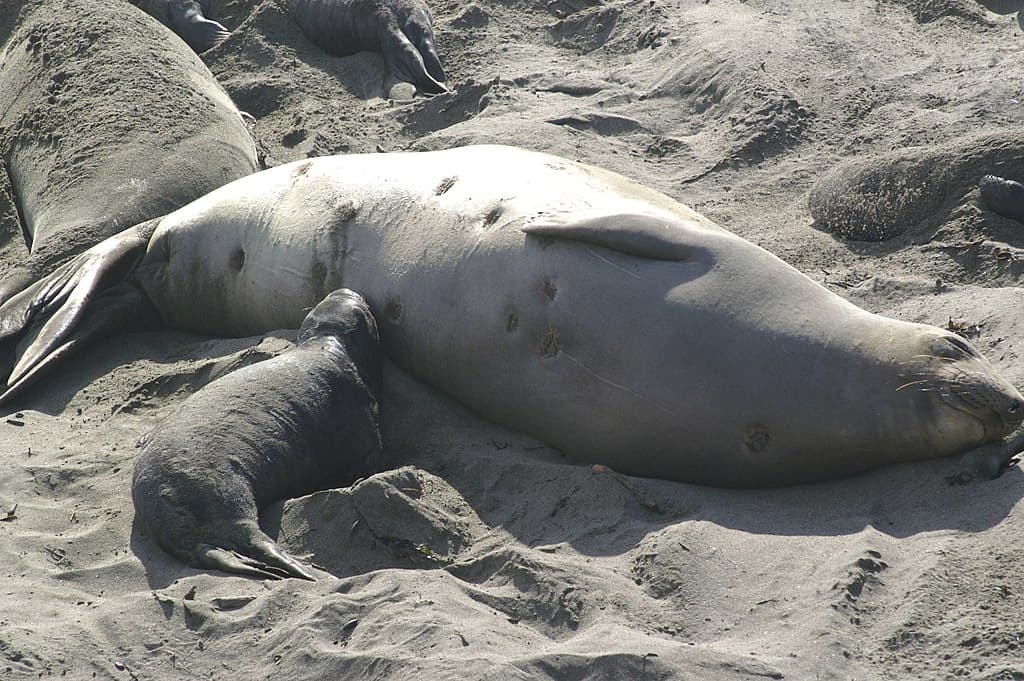
The cookie cutter shark (Isistius brasiliensis) might be small—typically less than 20 inches in length—but it’s developed one of the most unusual feeding strategies in the shark world. Living in the deep waters of tropical and temperate oceans, these sharks are named for their unique feeding method: they attach to larger animals like tuna, whales, dolphins, and even submarines, using their specialized jaws to remove a perfectly round plug of flesh, leaving behind a cookie cutter-shaped wound. Their lower jaw contains a row of large, triangular teeth that work like a cookie cutter, while their upper jaw has smaller teeth to grip the prey. What makes cookie cutter sharks even more fascinating is their bioluminescent properties—their bodies glow green except for a dark collar around their gills, creating what scientists believe is a form of mimicry that attracts larger predators. Despite their parasitic feeding habit, cookie cutter sharks pose virtually no danger to humans due to their small size and deep-water habitat. These sharks are rarely seen by people, living at depths between 1,000 and 3,000 feet and migrating toward the surface only at night. Their unique adaptations and feeding strategy make them one of the most specialized predators in the ocean.
Nurse Shark The Lazy Lounger
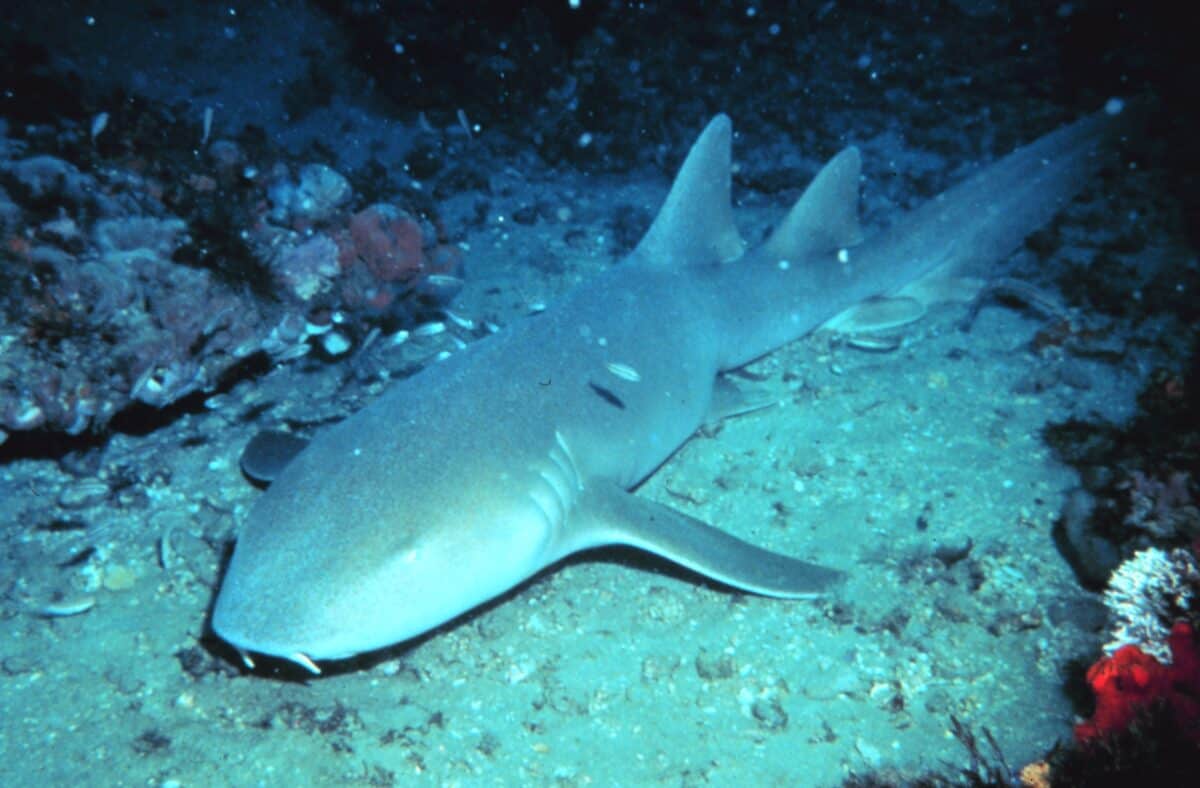
The nurse shark (Ginglymostoma cirratum) epitomizes the laid-back lifestyle, spending much of its day resting on sandy bottoms or in caves around coral reefs. Growing to about 14 feet in length, these yellowish-brown sharks have distinctive barbels (whisker-like sensory organs) near their nostrils that help them locate buried prey in the sand. Unlike the speedy hunters that sharks are often portrayed as, nurse sharks are slow-moving bottom feeders that primarily eat small fish, shrimp, and squid by using their strong suction power to vacuum prey from crevices or the seafloor. They have thousands of tiny teeth designed for crushing shellfish rather than tearing flesh. Nurse sharks are among the most docile shark species and typically allow divers to approach quite closely—though they should always be treated with respect as they may bite if harassed. In places like Belize and the Bahamas, snorkelers regularly encounter nurse sharks without incident. Their placid nature has made them a favorite subject for research, as they tolerate captivity well and adapt to human presence. Despite their name, these sharks aren’t caretakers—the term “nurse” likely comes from the sucking sound they make while feeding, reminiscent of a nursing baby.
Angel Shark The Ambush Predator
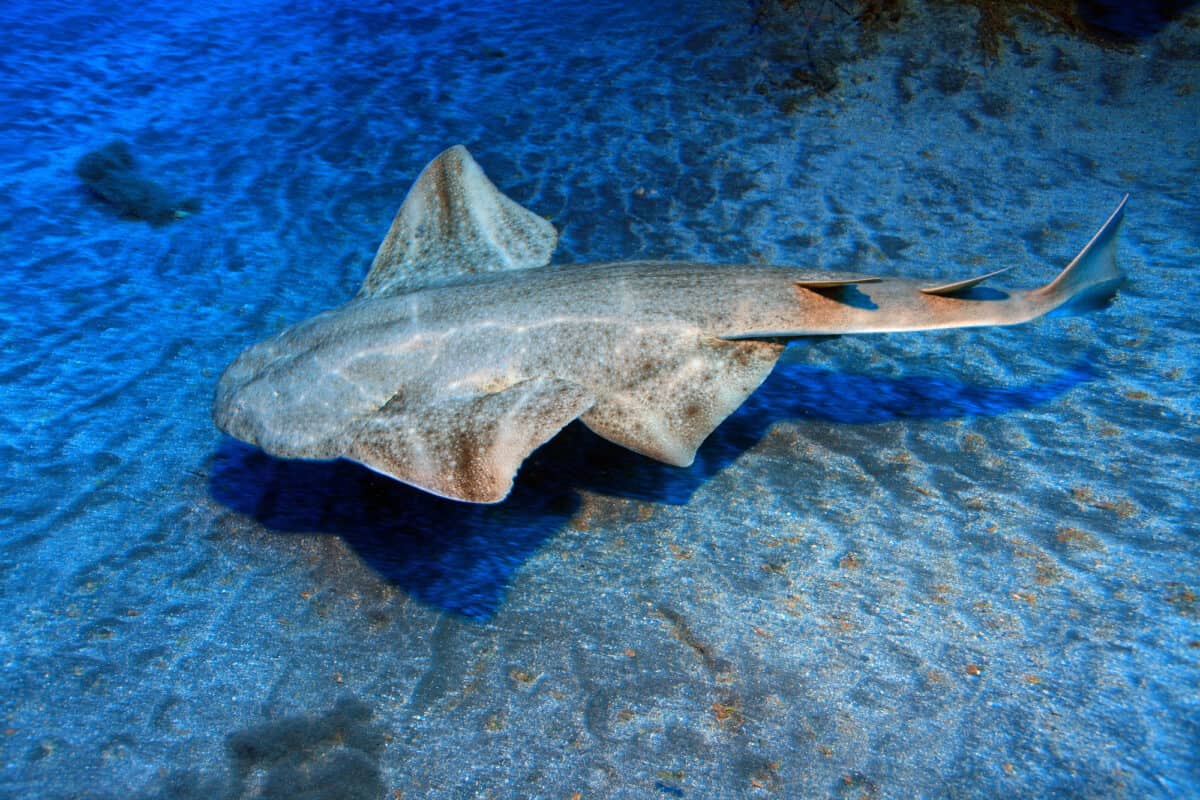
Angel sharks (family Squatinidae) might be one of the most unusual-looking shark species, with their flattened bodies resembling rays more than typical sharks. These highly specialized ambush predators have evolved to become nearly invisible on the ocean floor, where they lie buried in sand or mud with only their eyes visible. When an unsuspecting fish swims overhead, the angel shark can strike with astonishing speed, lunging upward to capture prey in less than a tenth of a second—one of the fastest recorded strikes in the animal kingdom. Growing to about 5 feet in length, angel sharks have powerful jaws lined with sharp teeth, but they use these exclusively for catching fish, squid, and crustaceans. Once common throughout the Atlantic, Mediterranean, and Pacific, many angel shark species have declined dramatically due to bottom trawling, which disturbs their habitat and frequently catches them as bycatch. In fact, the common angel shark is now critically endangered. These sharks pose virtually no threat to humans unless directly provoked, and their secretive nature means encounters are rare. Conservation efforts are now focusing on protecting remaining populations of these unique, ancient sharks, which have existed in similar form for over 160 million years.
Zebra Shark The Pattern-Changing Marvel

The zebra shark (Stegostoma fasciatum) undergoes one of the most dramatic appearance changes of any shark species. Juveniles display a striking pattern of dark stripes on a yellowish background—hence the name “zebra”—but as they mature, this pattern transforms into a constellation of dark spots on a tan background, leading to their alternate name, the leopard shark (not to be confused with the North American leopard shark). These docile bottom-dwellers can grow up to 8 feet long and are recognizable by their cylindrical body and conspicuous ridges running along their backs. Found in tropical Indo-Pacific waters, zebra sharks are primarily nocturnal, spending their days resting on sandy bottoms near coral reefs and becoming active hunters at night. They have unusually flexible bodies that allow them to wriggle into narrow crevices in pursuit of crustaceans, small fish, and mollusks. Their slender, muscular bodies and long tails enable them to navigate complex reef structures with remarkable agility. Zebra sharks are popular with divers due to their placid nature—they rarely show aggression toward humans and sometimes allow gentle interaction. Unfortunately, zebra shark populations have declined significantly due to fishing pressure and habitat degradation, leading to their classification as endangered on the IUCN Red List.
Goblin Shark The Living Fossil

The goblin shark (Mitsukurina owstoni) might look like something from science fiction, but it’s very real—a rare, deep-sea species often described as a “living fossil” because it belongs to a family of sharks that has remained virtually unchanged for 125 million years. The most distinctive feature of this bizarre-looking shark is its protrusible jaw, which can extend outward like an alien appendage to snatch prey. Combined with its long, flattened snout and nail-like teeth, this adaptation gives the goblin shark its unearthly appearance. Growing to lengths of 10-13 feet, goblin sharks have soft, flabby bodies and semi-translucent skin with a pinkish hue due to visible blood vessels. They inhabit depths between 890 and 3,150 feet worldwide, making encounters with humans extremely rare—most specimens are discovered when accidentally caught in deep-sea fishing nets. Despite their fearsome appearance, goblin sharks pose no threat to humans due to their deep-water habitat and sluggish nature. They’re believed to be ambush predators that use the sensory organs in their long snouts to detect the electrical fields of prey before rapidly extending their jaws to capture fish, squid, and crustaceans. Very little is known about their reproduction, lifespan, or population status, adding to the mystique of these remarkable creatures.
Greenland Shark The Ocean’s Methuselah

The Greenland shark (Somniosus microcephalus) holds the distinction of being the longest-lived vertebrate known to science, with individuals estimated to live between 300 and 500 years. These enormous, slow-growing sharks reach lengths of up to 24 feet and inhabit the frigid waters of the North Atlantic and Arctic Oceans, typically at depths of 600-2,400 feet. Their extraordinary longevity is attributed to their extremely slow metabolism—an adaptation to cold waters—which causes them to grow less than half an inch per year and not reach sexual maturity until around 150 years of age. Greenland sharks move at a glacial pace, typically swimming at less than 1 mile per hour, earning them the nickname “sleeper sharks.” Despite their sluggish nature, they’re apex predators that feed on fish, seals, and even reindeer that have fallen into the water. Most fascinating is that nearly all Greenland sharks host parasitic copepods that attach to their corneas, causing partial blindness—yet they continue to hunt successfully using their exceptional sense of smell. Their flesh contains high levels of trimethylamine oxide, which acts as a natural antifreeze but makes the meat toxic to humans unless properly processed through traditional methods. Despite their fearsome size, there are no confirmed attacks on humans by Greenland sharks, likely due to their deep-water habitat and extremely slow movement.
Port Jackson Shark The Egg-Laying Engineer
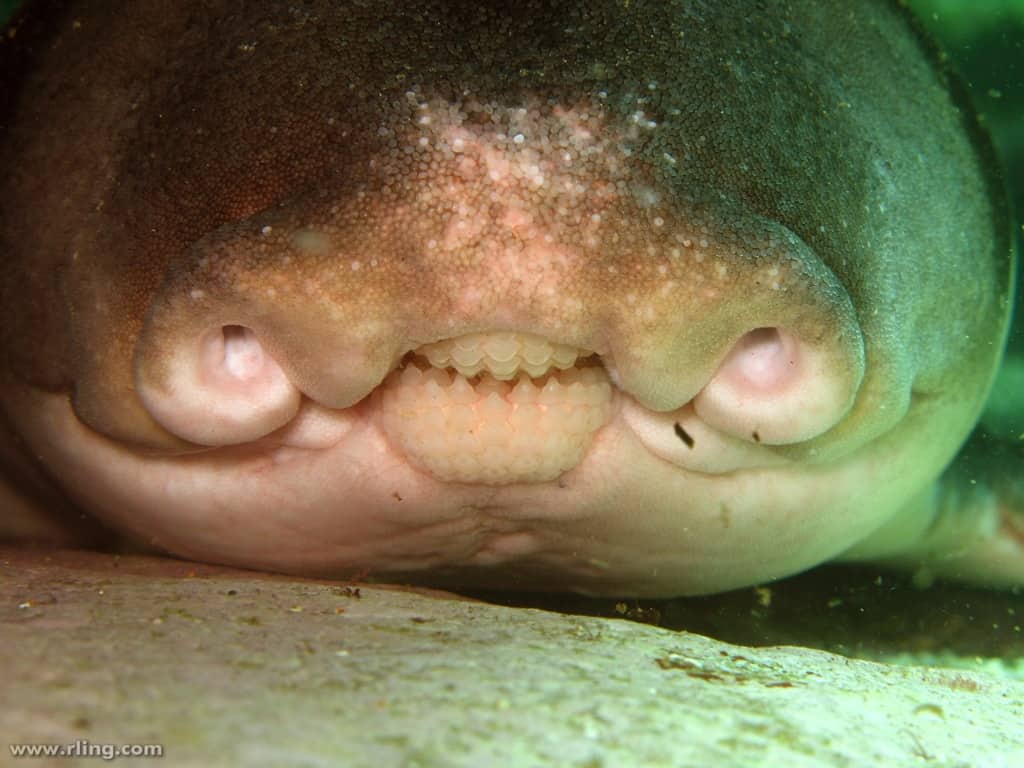
The Port Jackson shark (Heterodontus portusjacksoni) might not win beauty contests with its blunt head and distinctive harness-like markings, but it compensates with fascinating behaviors and adaptations. Native to the coastal waters of southern Australia, these medium-sized sharks typically grow to about 5 feet in length. What makes Port Jackson sharks particularly interesting is their specialized dentition—unlike most sharks with rows of similar teeth, they have pointed front teeth for gripping prey and flattened rear teeth for crushing hard-shelled creatures like sea urchins, mollusks, and crustaceans. Perhaps their most remarkable feature is their reproductive strategy. Female Port Jackson sharks lay large, spiral-shaped egg cases that look like intricate.
Conclusion:

From the graceful whale shark to the mysterious goblin shark, the 18 species highlighted in this list reveal a side of sharks that’s rarely seen in popular media—one of diversity, complexity, and peaceful coexistence. Many of these sharks have evolved unique traits that allow them to thrive in a range of environments, from coral reefs and sandy shallows to the pitch-black depths of the ocean. Contrary to their fearsome reputation, the vast majority of sharks are not only harmless to humans but also essential to the health of marine ecosystems. Understanding the truth about these remarkable creatures is the first step toward protecting them. With many shark populations declining due to overfishing, habitat destruction, and climate change, it’s more important than ever to replace fear with knowledge and respect. By appreciating sharks for the fascinating and often misunderstood animals they are, we can help ensure that these ancient ocean guardians continue to roam our seas for generations to come.
- 10 U.S. States Where You Are Likely to Spot a Wild Fox - August 18, 2025
- Salmon Swim Upstream for Miles to Lay Their Eggs But What Guides Them Home - August 18, 2025
- 9 Snakes That Love the Desert And 6 That Need Moisture - August 18, 2025

